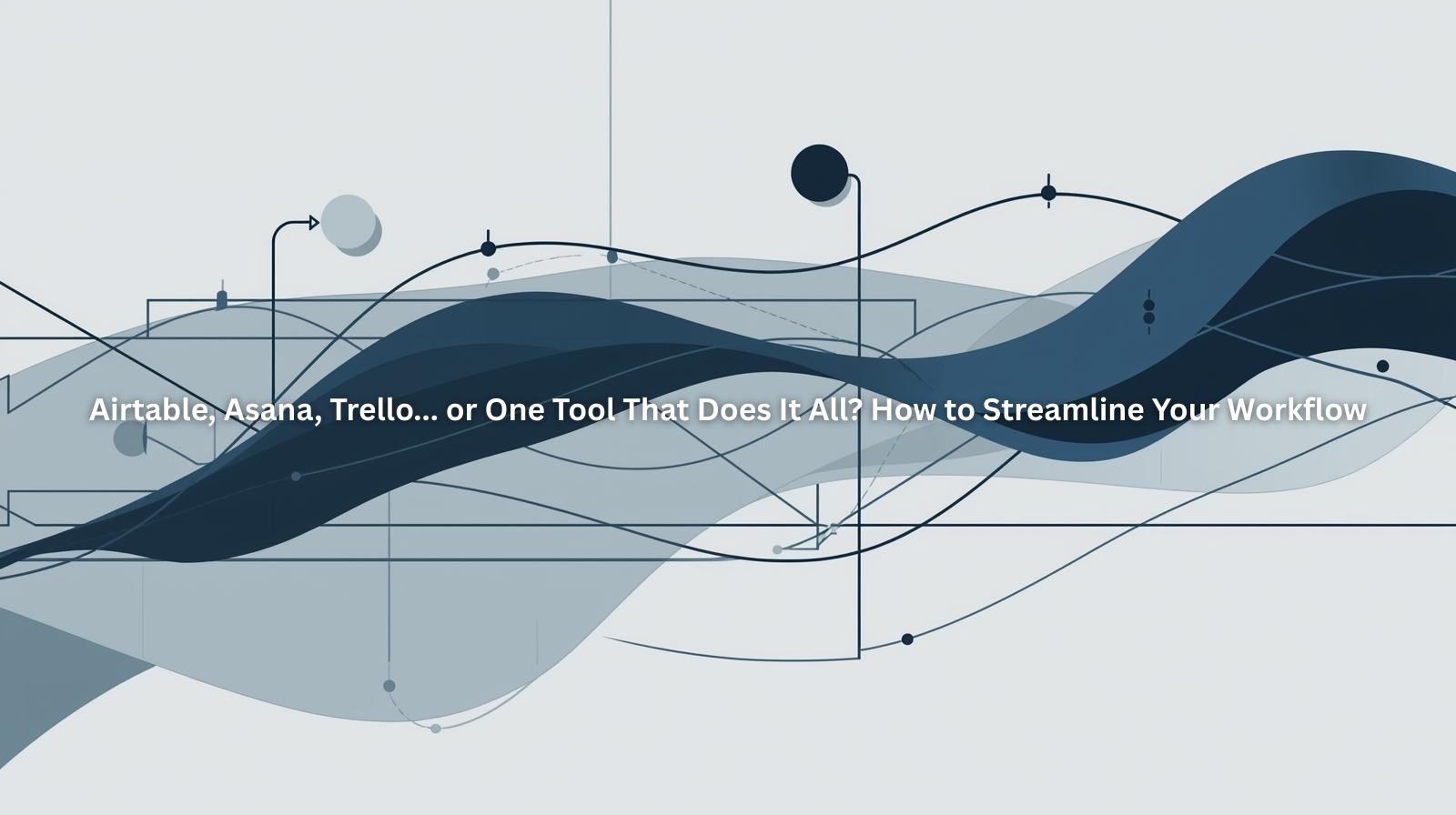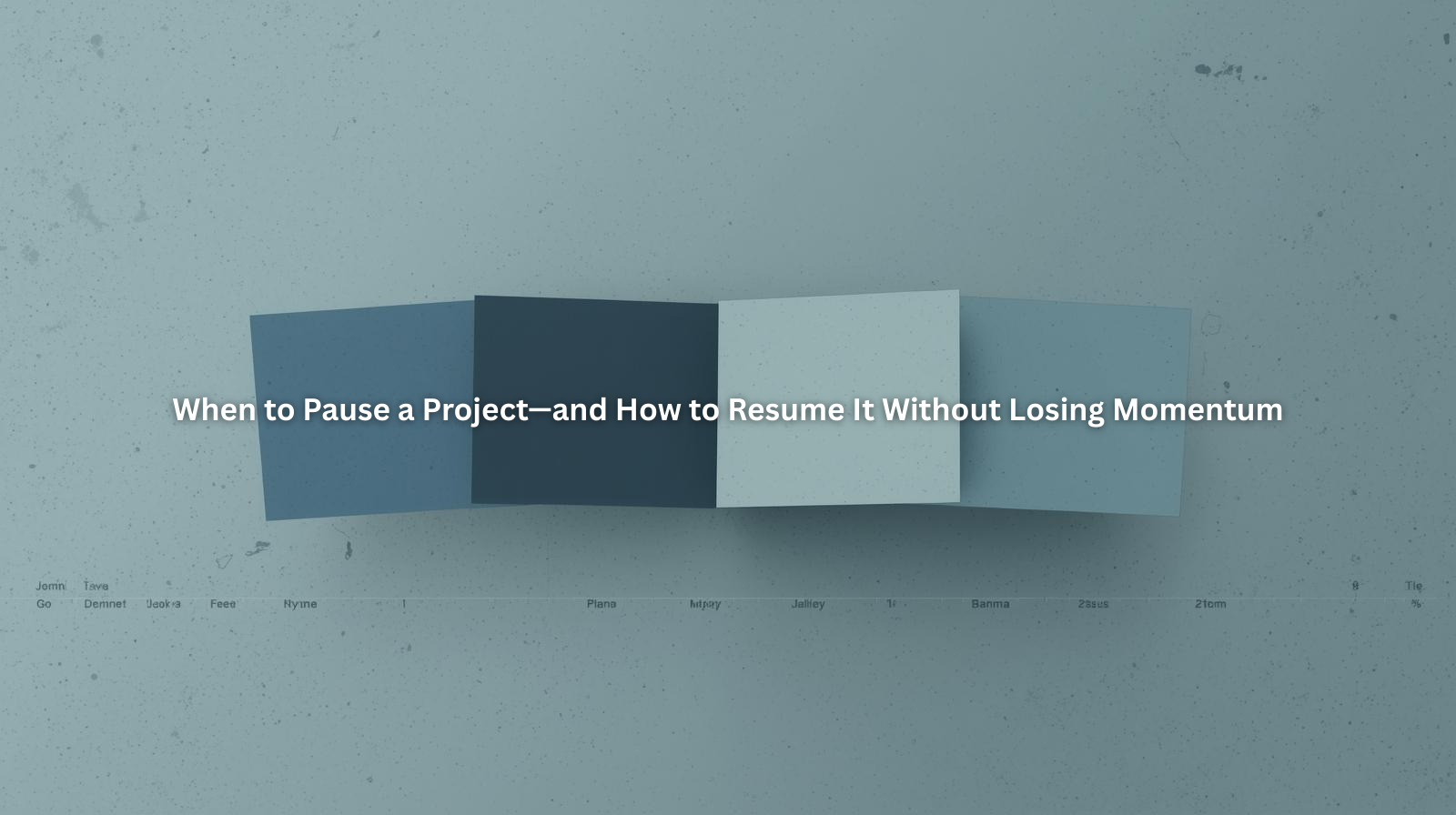How to Choose the Right Tools for Your Freelance Tech Stack

Table of Contents
- Why Your Freelance Tech Stack Matters
- Signs Your Tech Stack Is Working Against You
- The Core Categories Every Freelancer Should Cover
- How to Choose Tools That Actually Support Your Workflow
- The Power of Keeping It Simple (One Tool Where You Can)
- How ProjectBook.co Helps Streamline Your Stack
- FAQ: Building the Best Freelance Tech Stack
1. Why Your Freelance Tech Stack Matters
When you run a solo business, your tools aren’t just helpful add-ons — they’re the actual infrastructure that holds your work together.
You don’t have an ops team or a project manager handling things behind the scenes. You have your brain, your calendar, and the systems you build for yourself.
That’s why the tools you choose matter so much: they literally shape how you spend your days.
A strong freelance tech stack gives you clarity and confidence.
A cluttered, mismatched one? It quietly drains your time and energy — sometimes without you even realizing it.
The goal here isn’t to chase the latest trends or build an elaborate tech ecosystem.
It’s to create a lean, flexible stack that helps you:
- Stay organized across multiple client projects
- Save time on admin and repetitive tasks
- Deliver better work, faster
- Protect your focus and creativity
And maybe most importantly: it’s a stack that feels good to use, not something that makes you sigh every time you open it.

2. Signs Your Tech Stack Is Working Against You
Let’s be real — most freelancers don’t set out with a carefully designed tech stack.
We start with free tools here and there, adopt whatever clients suggest, and cobble together a system as we go. That’s normal.
But over time, this “Frankenstack” can cause more problems than it solves.
Some red flags to watch for:
- You’re using too many disconnected apps, and constantly copying the same info between them
- You don’t trust your current system, so you’re keeping backup lists (sticky notes, Google Docs, mental checklists)
- You’re paying for tools you barely touch anymore
- You’re switching tabs 50 times a day to find simple things
- Your project dashboards or client folders feel like a mess, which makes you avoid opening them
If you’re nodding along, you’re not alone. The good news: simplifying your tech stack is one of the fastest ways to regain focus and flow.
3. The Core Categories Every Freelancer Should Cover
Here’s where it’s easy to go overboard. You don’t need a tool for everything.
But there are a few key categories where having solid tools really does pay off.
1️⃣ Client Relationship Management (CRM)
This is where all your client details live:
contact info, project notes, past invoices, important dates, client preferences, etc.
Without this, client relationships feel scattered — and it’s way harder to deliver a great experience.
2️⃣ Project & Task Management
Your brain isn’t a reliable storage device.
A dedicated space for planning your projects and breaking them into tasks is essential — whether that’s a timeline, task board, or list view.
3️⃣ Communication
Your clients expect clarity and responsiveness. Having a primary system for client communication (email, chat, video calls) helps you manage expectations and reduce misunderstandings.
4️⃣ File Storage & Sharing
Every project generates digital assets. You need a simple, reliable place to store and share them — no more “where was that attachment?” chaos.
5️⃣ Invoicing & Payments
Getting paid should not feel like a multi-step scavenger hunt. A tool that helps you send invoices, track payments, and follow up easily saves enormous time and stress.

4. How to Choose Tools That Actually Support Your Workflow
This is where a lot of freelancers trip up — not because they’re doing anything wrong, but because the software world is designed to be noisy.
You’ll see plenty of “must-have” lists online. But the truth is: you don’t need 20 tools.
You need tools that fit your unique process and brain.
Here are five questions to ask when evaluating any tool:
1. Does this tool solve a real problem I have?
If it’s not solving an existing frustration or bottleneck, skip it.
2. Is this tool intuitive for me?
If you need 10 YouTube tutorials just to get started, it’s probably not a fit.
3. Will this tool integrate with my existing stack?
You want flow, not fragmentation. Look for tools that work well with what you already use.
4. Will this tool grow with my business?
If it only works when you have 1-2 clients, you’ll outgrow it fast. Think long-term.
5. Can this tool replace multiple tools I’m currently using?
This is gold. The more tools you can consolidate into one reliable hub, the more mental clarity and time you reclaim.
5. The Power of Keeping It Simple (One Tool Where You Can)
It’s tempting to believe that “more tools = more professional.”
But in reality, tool sprawl is one of the biggest sources of hidden inefficiency for freelancers.
Every extra platform adds cognitive load.
Every integration you have to manage adds friction.
Every duplicate list or tracker increases the risk of something falling through the cracks.
That’s why many seasoned freelancers eventually prioritize simplicity above all else.
If you can manage project planning, client info, and communication inside a single platform — do it.
That one decision can free up more headspace than any fancy productivity hack.
6. How ProjectBook.co Helps Streamline Your Stack
This is exactly why we built ProjectBook.co — to help freelancers move from a scattered Frankenstack to a calm, cohesive workflow.
Instead of juggling half a dozen tools, you can manage your business inside one clean space:
- Store client profiles and project notes together
- Plan project timelines visually or in list format
- Track tasks and milestones clearly
- Communicate with clients (and track those conversations) inside the project hub
- Attach and organize files and links where they’re needed
- See your full business pipeline at a glance
The goal isn’t just to “do more.”
It’s to make running your freelance business feel lighter, more intuitive — so you can focus your energy on great client work.

7. FAQ: Building the Best Freelance Tech Stack
Q: How many tools is too many?
If you need more than 5 core apps just to run your daily workflow, it’s worth simplifying.
Q: Do I need to use the same tools as “big name” freelancers?
No. The best stack is the one that works for your specific style and client base.
Q: How often should I review my stack?
Twice a year is ideal. Ask: What’s working? What feels clunky? What could I replace with one better tool?
Q: Can ProjectBook really replace a project management tool + client CRM?
Yes! That’s exactly what it was built for — to help solo professionals manage projects and clients in one integrated system.
Final Word
Your tools shape your experience as a freelancer.
They either help you flow, or they subtly drain you.
Building the right freelance tech stack isn’t about perfection. It’s about clarity.
It’s about knowing where your work lives, where your client relationships live, and how to move through your day with less friction.
Start with what feels light.
Remove what feels heavy.
And when in doubt, remember: fewer, better tools will always beat more tools with more complexity.
If you’re ready to simplify your stack, give ProjectBook.co a try.
It’s built to help freelancers like you run their business — and love the process of doing it.


